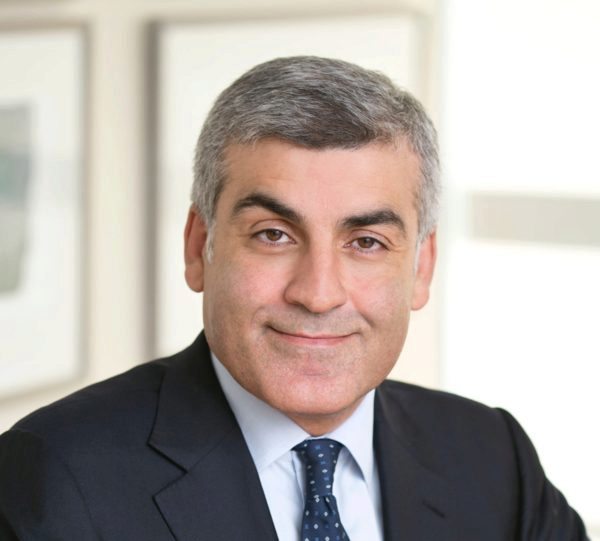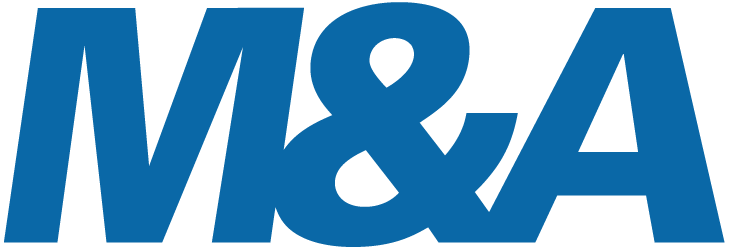Shedding Light on the Dutch “Stichting”
Last modified: 20 juli 2023 12:26

Meer dan 60% van de AEX-bedrijven hebben een beschermingsmuur. Hoe werken deze constructies? Jones Day-advocaten Ferdinand Mason, Floris Pierik, Bastiaan Kout en Robert Profusek hebben een Engelstalige explainer geschreven over de Nederlandse stichting.
Door Ferdinand Mason, Floris Pierik, Bastiaan Kout en Robert Profusek
During its deployment by Mylan to address Teva’s $40 billion offer, more column inches have been spent on the Dutch stichting—the Dutch word for foundation—than ever before.
Although referred to as "arcane" or "obscure" and said to possess "special powers,"[1] Dutch foundations are in fact established, versatile, and well-understood entities with a history going back to the 15th century. They are true multipurpose vehicles that can be used for a broad range of purposes and not just to act as an anti-takeover device, as the Stichting Preferred Shares Mylan did for Mylan.
What is a Stichting?
A Stichting, or Foundation (the two words will be used interchangeably in this Commentary), is a legal entity established under Dutch law. The purpose of the Foundation, outlined below, can be widely worded or narrowly defined.
It has full legal personality and may acquire and dispose of assets, grant security, or provide guarantees.
A Stichting is unique among legal entities. It does not have an owner (no shareholders) and is often referred to as an "orphan" entity. The only governing body prescribed by law is its board. However, there is flexibility to provide for additional governing bodies in the Foundation’s articles, such as a supervisory board, and the articles may provide that a third party appoint or dismiss board members.

What Can a Stichting Do?
In addition to being used as an anti-takeover device, Dutch Foundations have many purposes:
– Holding management’s participation in private equity structures against issuance of depository receipts without voting rights;
– Acting as the shareholder of securitization vehicles;
– Functioning as bankruptcy-proof depositories of IP rights;
– Holding the assets in trust for investment funds;
– Holding the Dutch State’s interest in bailed-out financial institutions;
– Warehousing assets in case of antitrust concerns; and
– Warehousing key assets to isolate them from claims.
We will take a closer look at some of these roles, but we will start with discussing the Foundation as an anti-takeover device, since this role generates the most controversy.

The Stichting as an Anti-Takeover Device
Traditionally, Dutch-listed corporations have employed a variety of anti-takeover measures resulting in the so-called "Dutch Discount," whereby Dutch corporations were said by some to be valued lower than their foreign counterparts. According to Eumedion, 63.6 percent of the AEX-listed companies have a Foundation potentially serving as an anti-takeover device.[2]
So how do these anti-takeover devices work?
Stichtingen and Preferred Shares. Dutch law allows corporations to have a separate class of voting shares—preferred shares—that entitle the holder to a fixed dividend, usually calculated as a percentage of the amount of capital contributed before dividends are paid on the ordinary shares. Preferred shares can have a low par value—EUR 0.01. The Foundation articles may provide that, at issuance, only 25 percent of par value needs to be paid up. These minimum values allow the corporation to issue many shares, diluting the voting power of ordinary shareholders, while the recipient needs a relatively small amount of funds to pay for them.
To whom are the preferred shares issued? Typically, to a special purpose Foundation preferably established at the same time the corporation goes public. The Foundation should have a board that is independent of the corporation.
To implement the structure, the corporation and the Foundation will first enter into a call option agreement that grants the Foundation the right to acquire newly issued preferred shares (for instance, up to the number of issued and outstanding ordinary shares resulting in the Foundation obtaining 50 percent of the voting rights). In some cases, the call option agreement is combined with a put option agreement requiring the Foundation to accept the preference shares at the election of the corporation.
Standby bank financing for the Foundation must be arranged to allow the Foundation to pay up the minimum amount to acquire the preference shares.
Finally, either the general meeting of shareholders of the corporation or its board (if the board has been delegated the authority to grant option rights) must adopt a resolution authorizing the grant of the option rights.
Trigger Events.
The objects clause of the Foundation will usually contain language along the following lines:
The purpose of the Foundation is to foster the interests of the [named] corporation and associated companies such that the interests of the corporation and its stakeholders are safeguarded as effectively as possible to resist to the best of its ability influences which may conflict with those interests by prejudicing the independence, continuity, and/or identity of the corporation.
The board of the Foundation will need to conduct an independent assessment if an event occurs that potentially conflicts with the corporate interest of the corporation. This usually takes the form of either a party seeking to acquire the majority of the shares in the corporation through a hostile bid or activists or shareholders acting in concert trying to force the corporation’s board to significantly change its strategy. In both contexts, the corporation’s strategy may be challenged, and the corporation’s independence, continuity, and identity may be threatened. Therefore, the Foundation should carefully consider whether there are sufficient grounds to trigger the call option.
The board of the Foundation will be bound by the corporation’s strategy as determined by the corporation’s board and duty-bound to support that policy against outside interference, in particular if the corporation’s independence and continuity are threatened. However, the Amsterdam Court of Appeals has also ruled that the Foundation’s board must retain independence and should not merely act to entrench the position of the corporation’s board.
Examples of elements that the Foundation’s board may consider when determining whether to exercise the call option are:
– Whether the bidder engaged in dialogue with the board of the corporation before making its intended offer public;
– Whether an agreement has been reached between the bidder and the corporation
– Whether the bidder has disclosed its intentions with the corporation.
As soon as the threat to the corporation’s independence and continuity has subsided, the Foundation and the corporation should take all necessary steps to deactivate the anti-takeover measures, such as convening a general meeting to authorize the repurchase of the preference shares.

So, Is This Really Allowed Under Dutch Law?
The short answer is "yes," provided that certain ground rules are complied with.
The Dutch Supreme Court has ruled that anti-takeover measures are permitted if they are proportionate. The Dutch Supreme Court applied as the relevant test "whether the action under the given circumstances and by a reasonable assessment of the involved interests still falls within the range of an adequate and proportionate response to the potential hostile takeover." The Dutch Supreme Court found that maintaining protective measures for an indefinite period is, in principle, not justified.
In addition, under the mandatory offer rules that apply to Dutch corporations with shares listed on a regulated market within the EEA, a legal entity acquiring control over a corporation is exempt from having to launch a mandatory tender offer if it: (i) is independent of the corporation, (ii) has the purpose of protecting the interest of the corporation and its business, (iii) obtains the shares after a public offer for the shares in the corporation has been made for a period of no more than two years, and (iv) has obtained the shares for the purpose of protecting the corporation. These rules do not apply to Dutch corporations listed outside the EEA, such as those listed on NASDAQ.
Finally, the corporation will have to disclose the existence of the arrangement with the Foundation and relevant details in its annual report.
Listing Depository Receipts Instead of Shares
Another anti-takeover measure popular with Dutch banks is to record depository receipts instead of shares. The shares are held by a Foundation, which, in turn, issues depository receipts representing the economic interest in the underlying shares to investors. This separation of legal and economic ownership means that unless granted a power of attorney by the Stichting, the holders of the depositary receipts will not have voting rights.
Withholding voting rights from a hostile bidder would not prevent the bidder from launching an offer for the depository receipts; however, even if the tender were successful, the bidder would not be able to exercise effective control over the target corporation, as the voting rights would remain with the Stichting.
Decision-Making by the Stichting
Both the decision to exercise the call option on the preferred shares and the decision not to grant a proxy require the board of the Stichting to carefully assess the situation with the support of independent advisers, much like the focused fiduciary processes employed by the boards of directors of U.S. target companies.
Other Uses for the Stichting
Given the focus on the Stichting as an anti-takeover measure, it is easy to forget that Foundations typically are used for different purposes.
1, Holding Management’s Participation in Private Equity Structures. It is common in private equity for management shares to be held by a Foundation in which the managers receive depositary receipts without voting rights. The sponsor will control the Foundation’s board to ensure that the Foundation votes with the sponsor in shareholder meetings. The sponsor typically also has a drag-along right to ensure that the Foundation sells its shares to a buyer of the underlying portfolio company.
2, Acting as a Bankruptcy-Remote Shareholder of Securitization Vehicles, Depository of IP Rights, or Trustee Holding Assets for Investment Funds. A Stichting can be used as a bankruptcy-remote ultimate shareholder of securitization vehicles, as a depository of critical IP (either directly or through a subsidiary), or as the trustee for investment funds. Foundation structures can be used by multinational corporations to isolate individual assets from third-party claims.
Conclusion
The potentially obscure Dutch Foundation has achieved some notoriety in recent high-profile matters. Nevertheless, if properly established and disclosed, it remains a valid and effective anti-takeover measure. Its flexibility allows the Stichting to be used in a wide variety of structures where an independent vehicle can be useful to isolate assets in a bankruptcy-remote manner or to facilitate the participation of management in private equity structures.









